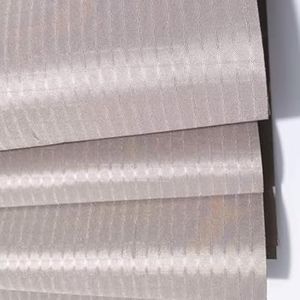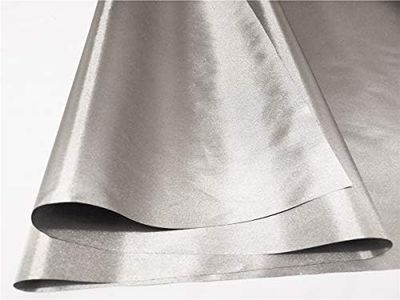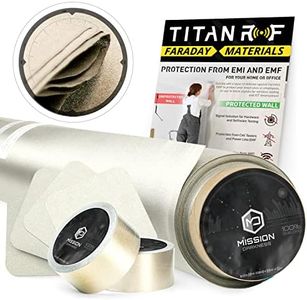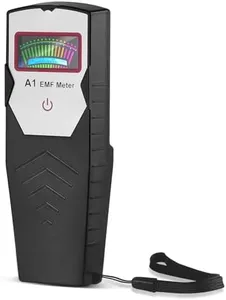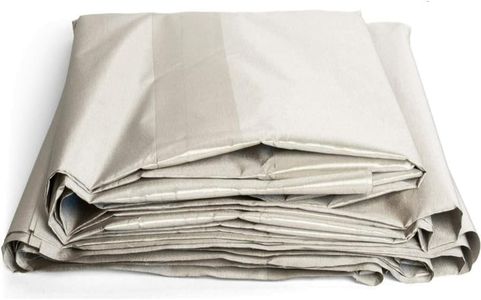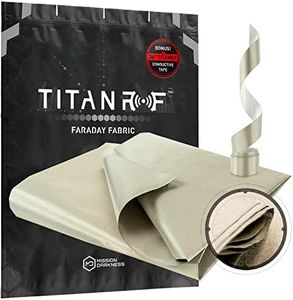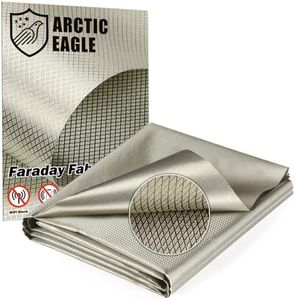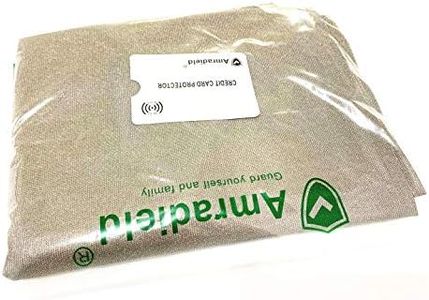10 Best Emf Shielding Fabric 2025 in the United States
Our technology thoroughly searches through the online shopping world, reviewing hundreds of sites. We then process and analyze this information, updating in real-time to bring you the latest top-rated products. This way, you always get the best and most current options available.

Our Top Picks
Winner
Electricity Faraday Fabric-EMI RFID More Sizes-Customized Shielding-Block WiFi/RF Anti-Radiation Military Grade for Radiowave Microwave and Other Electromagnetic Fields
Most important from
650 reviews
The Amradield Electricity Faraday Fabric is designed for high-level EMF shielding, boasting significant effectiveness with an average attenuation of 85 dB across a wide frequency range from 30MHz to 18GHz. This makes it highly suitable for blocking various electromagnetic fields, including those emitted by cell towers, WiFi, and microwaves. The fabric is composed of copper, nickel, and polyester, creating a conductive grid akin to a Faraday cage, ensuring robust shielding capabilities.
The surface resistance of below 0.03 ohm enhances its conductivity, making it effective for grounding and anti-static applications. The silver-colored, diamond-type fabric is also quite versatile, being easy to cut and sew for use in bags, curtains, tents, and more, offering adaptability for different projects and needs. Its large size, 100 meters long by 43 inches wide, provides ample material for extensive applications.
This product offers excellent EMF shielding effectiveness and versatility for various non-wearable applications, though it may lack comfort for direct wear. Therefore, it is best suited for stationary shielding purposes like curtains and tent linings rather than clothing.
Most important from
650 reviews
Block EMF RFID EMI RF Shielding Conductive Copper Nickel Fabric Blocks EMI, WiFi, Cell Phone,Military Grade Shielding Fabric Plaid Ripstop Type with Conductive Tape (50 Meters Long)
Most important from
33 reviews
The Amradield copper-nickel polyester fabric offers strong EMF shielding, blocking signals from 30MHz to 18GHz with an impressive 85 dB attenuation, which covers most common sources like WiFi, cell phones, and military signals. Its low surface resistance under 0.03 ohm means it’s highly conductive, effectively creating a protective barrier similar to a Faraday cage. The plaid ripstop design adds some durability, and the fabric’s thin 0.04-inch thickness makes it relatively lightweight and easy to cut and sew.
Made primarily of polyester blended with metal fibers, breathability might be limited, so it may not be the most comfortable choice for wearable items where airflow is important. The fabric is versatile for use in bags, curtains, tents, or shielding inserts, especially useful for protecting credit cards or reducing radiation exposure in electronics.
This fabric represents a solid choice for those needing military-grade, reliable EMF shielding in a flexible and workable material, though it may not be ideal if softness and breathability are priorities.
Most important from
33 reviews
Amradield Faraday Fabric 43"x 50M long Faraday Cloth Tape Nickel Copper Polyester Material Influence RF Signals WiFi Cell Bluetooth RFID Guards you Against Harmful Frequencies and Possible Data Theft
Most important from
117 reviews
The Block EMF RFID EMI RF Shielding Conductive Copper Nickel Fabric by Amradield offers strong shielding performance with an average attenuation of 85 dB across a wide frequency range from 30MHz to 18GHz. This makes it highly effective for blocking signals from multiple sources, including cell towers, microwaves, phones, and smart meters. The fabric is made from a combination of copper, nickel, and polyester, creating a conductive grid similar to a Faraday cage, which is excellent for electromagnetic shielding. Additionally, the fabric’s surface resistance is below 0.03 ohms, which further enhances its conductivity and shielding capabilities.
Measuring 43 inches wide and sold in lengths of 50 meters, it’s suitable for various applications such as bags, curtains, tents, and more. It is particularly beneficial for those looking to protect against RF signals, including Bluetooth, WiFi, GPS, and data theft from credit cards. The ripstop type ensures durability, while the silver color maintains a metallic and aesthetic appeal. However, while the fabric is easy to cut and sew, the polyester composition may impact breathability and comfort compared to natural fabrics. Moreover, users should be mindful of its thickness and weight when incorporating it into wearable projects, as these factors might affect comfort. Washing and maintaining conductive fabrics can also be challenging, potentially affecting longevity. Despite these drawbacks, it's a reliable choice for strong EMF shielding needs, especially in non-wearable applications.



